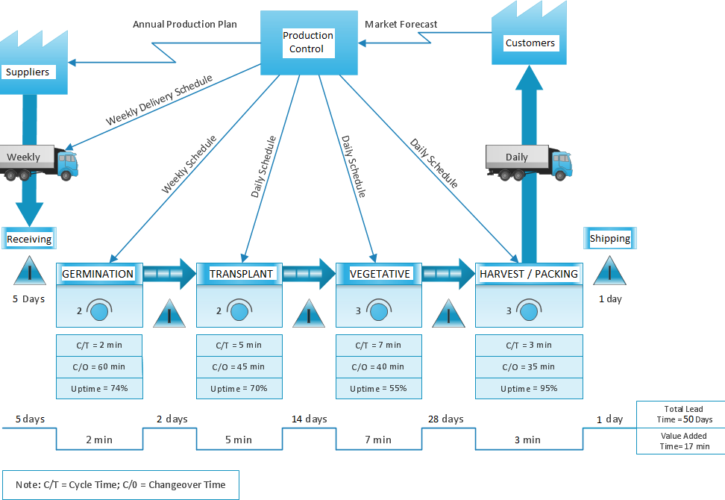The Gemba Walk, a lean management technique originating from Japan, has become an invaluable tool for enhancing operations within the realm of controlled environment agriculture (CEA), which includes greenhouses and indoor vertical farms. By immersing oneself in the real place where the work happens, managers gain profound insights into the challenges and opportunities present in CEA environments.
The Gemba Walk follows a structured process that begins with careful planning and objective-setting. By defining the purpose and scope, managers can focus their attention on key areas of improvement. Preparing for the walk involves gathering relevant data and communicating the purpose to the team, ensuring everyone understands the benefits and objectives.
Once on the ground, the Gemba Walk truly comes alive. Managers observe and document the operational processes within CEA facilities, paying close attention to workflows, equipment usage, maintenance routines, and employee interactions. By immersing themselves in the day-to-day activities, they gain a comprehensive understanding of the existing challenges and identify areas for improvement.
Engaging with employees and equipment vendors during the walk is essential. By fostering open communication, managers can tap into the wealth of knowledge possessed by the frontline staff. They ask questions, seek feedback, and encourage employees to share their insights on the effectiveness of the equipment. This collaborative approach can lead to innovative solutions and process improvements that drive efficiency and productivity.
The Gemba Walk’s true value lies in its ability to identify improvement opportunities. By analyzing the observations made during the walk, managers can pinpoint areas in need of enhancement. It could be outdated equipment that hampers efficiency or safety hazards that require attention. By leveraging multi-vendor auction websites specializing in horticulture equipment, managers can explore a wide range of options, both new and used, that align with the identified improvement areas.
Examples of Gemba Walk in CEA environments include upgrading equipment to improve efficiency and reduce energy consumption, prioritizing workforce safety through enhanced equipment and training programs, and optimizing processes through automation and streamlined workflows. The Gemba Walk empowers managers to make informed decisions and take proactive steps towards driving progress in CEA operations.
In conclusion, the Gemba Walk is a powerful tool that allows managers to gain deep insights into the inner workings of controlled environment agriculture. By immersing themselves in the real place where the work happens, they can identify areas for improvement and leverage multi-vendor auction websites to access horticulture equipment that aligns with their needs. By embracing this lean management technique, CEA businesses can unlock their full potential and achieve remarkable growth in productivity and efficiency.




